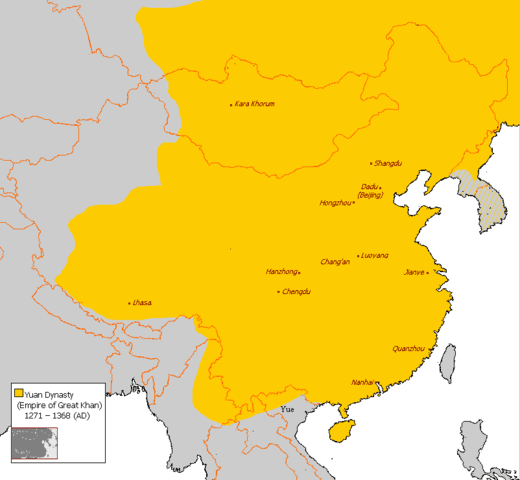Expansion of the Mongol Empire and the establishment of the Yuan Dynasty

In 1205, Genghis Khan united all the Mongolic tribes of the present-day region of Mongolia and Inner Mongolia [History.com Editors, 2019]. Genghis went on to conquer more of the surrounding region, starting with northwestern China, as the Mongols extensive use of horses and bows and arrows enabled them to move quickly and defeat many different peoples [History.com Editors, 2019]. The expansion of the Mongol empire, first under Genghis Khan and later by his descendants, led it to become the largest contiguous land empire in history, stretching from Poland to Vietnam, covering an area roughly the same size as Africa [History.com Editors, 2019]. In 1279 one of Genghis Khan’s descendants, Khubilai Khan, succeeded in conquering the whole of China and establishing the first non-ethnic Han Chinese dynasty, the Yuan Dynasty [Bawden, 2019], imposing a strict ethnic hierarchy with Mongols at the top and Han Chinese at the bottom [Rossabi, R, 2014]. Under the discriminating and foreign rule of the Yuan Dynasty, many Han Chinese begin to develop a resentment for the ruling Mongol class [The Editors of Encyclopedia Britannica, 2019]. In 1368, after a steady decline in the power of the Mongol rule, the Yuan Dynasty came to an end when Mongol leaders were driven out of Beijing. During the century-long Mongol rule of China, the Mongolian language and script failed to surpass Mandarin as a medium of communication [The Editors of Encyclopedia Britannica, 2019].